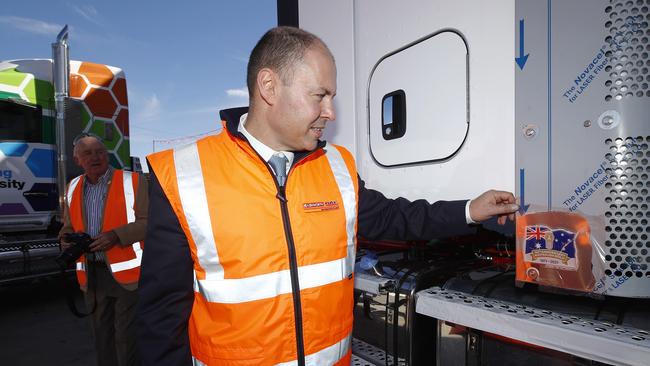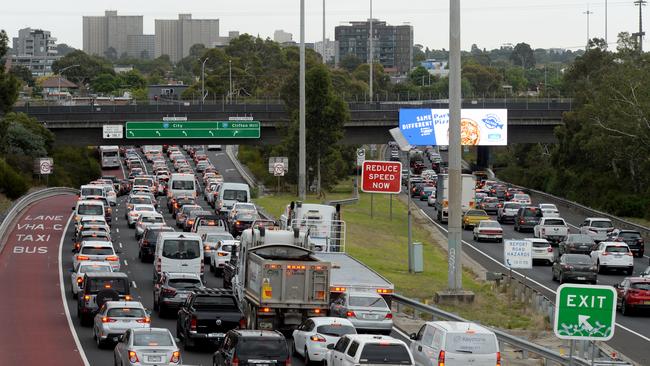
But nothing prepared him for the magnitude of Australia’s economic recovery. In vast areas of the land a boom is swamping the remaining pockets of depressed economic activity.
No one knows exactly the budget implications of this boom but the joy on Treasury faces in Canberra indicates that their initial estimate of a budget deficit of $200 billion might be close to being halved.
But this is no ordinary boom, because associated with it are fundamental changes in the way we plan to live and manage our enterprises. And as I explain below it also coincides with a boom in the US.
While Josh Frydenberg deservedly takes the credit for the way he designed JobKeeper, its success would not have been possible but for the skilled way the Australian Taxation Office operated.
When he launched the scheme Frydenberg told the ATO that he wanted its top team. Sadly other fiefdoms in the ATO continue to abuse their unrestrained powers with no working appeal system. But the ATO top team has created a wave of goodwill towards the tax office and showed just how much the nation would benefit from modern US-style systems.
The first signs that the pandemic would actually boost spending in certain areas came just after Easter last year, following a dreadful March.
People began buying goods to improve their homes and retailers of these products were stunned at the sudden rise in demand. They thought it would end but it’s still going.
The Harvey Norman and Good Guys advertisements in newspapers around Australia are a surface manifestation of this boom.
Around Australia the week before Easter for property-orientated lawyers is normally quiet. But this year there was an unprecedented frenzy of activity because to qualify for the government first homebuyer scheme land had to be purchased this week. There was a mad scramble. This is merely a symptom that young Australians have decided that renting is no longer the best option and have begun buying homes ---often in outer suburbs or in regional areas ---with incredible determination.
Home ownership in Australia has been on the decline for some years but it is about to recover dramatically. And with that change in attitude comes a similar revolution in the way debt is viewed. Young couples look not so much at the amount owed but rather their weekly payments and how they compare with rent.
With interest rates low and banks making it easy to gain loans, dwellings are being purchased with massive mortgages that will probably never be repaid until the house is sold.
Australians have been talking about decentralisation for generations but it is now happening partly because they believe they can work remotely, but more importantly because they want access to lower cost houses and land. Sleepy towns and cities around Australia are waking up.
At the same time state governments have stepped up their spending, particularly on infrastructure, so that too is accelerating the boom and worsening skill shortages.
Older Australians on seeing the value of their home rise are taking the opportunity to use lower interest rates and easy credit to upgrade their accommodation.
The combination is creating a building boom that is one of the biggest we have seen and is causing a big shortage of skills. And the combination of higher residential property values, and the abundance of work in building is spreading confidence around the country and a large number of other enterprises are basking in the increased spending.
And that momentum is boosted by the fact that Australians can’t travel overseas (and in many cases interstate) so they are increasing their spending in the local markets.
In this environment maintaining JobKeeper and the old JobSeeker rates would have been economic vandalism, but it’s never easy for any Treasurer to withdraw benefits, particularly when pockets in the community are still suffering and there are periodic lockdown breakouts, as occurred this week in Brisbane. The ALP has exploited every drop of political capital out if this situation. What’s required is help for specific industries particularly related to overseas students and tourists, plus air travel.
The amount of trucks on the road is a good indicator of economic activity.
In the December quarter Transurban’s Sydney large vehicle toll traffic was up 20 per cent, although new toll roads boosted that figure. In Melbourne, while car tolls were down 43 per cent on 2019, large vehicles were only down by 6.7 per cent on the previous year. Brisbane’s large vehicle traffic with virtually steady on 2019 levels. The March quarter will show a further big rise in large vehicle traffic on toll roads.
At the moment many people are still reluctant to use public transport and the amount of cars on the roads is rising.

These forces, plus the stay-at-home employment patterns that developed in the pandemic, have curbed the recovery in central business districts --- particularly in Melbourne.
But that decline has been accelerated by the big boost in online purchasing which makes it hard for many CBD retailers. Here we have a fundamental long-term change.
What will halt the boom? The Reserve Bank has vowed to keep a lid on interest rates for three years. But Australian banks borrow an important part of their money on global markets. The stimulation in the US is massive and coincides with a big rise the power of unions and the curbing of independent contracting. That’s a recipe for much higher inflation and higher interest rates and the US bond market has already signalled that danger. Higher Australian interest rates or even the suspicion that could happen will curb this boom.
The China trade clamps have been offset by a huge rise in the iron ore price. This may backfire on us in the next 18 months because China shows no sign of backing down. But the outlook for commodities remains strong because the US has started to boom — driven by American consumers, armed with government stimulus money, boosting their spending over a wide area. US factory production and product sales soared in March; inventory levels are at all-time lows, and factories can’t get supplies fast enough, partly because China can’t keep up. But President Biden is making structural changes that will make the US a more expensive place to do business. This is causing enterprises to look at Australia as a home for part if their operations. We are seeing that displayed in filmmaking. It will lead to even greater demands for skills which means we must bring into the skilled workforce those who were forced to undertake unskilled work because there was no demand for their skills. This will require retraining.
But over and above that we will also need increased migration.
The momentum that has been developed will continue well into 2022. And of course 2022 is election year.




When Treasurer Josh Frydenberg launched JobKeeper as the pandemic was ramping up, he was optimistic it would enable a strong economic bounce-back.